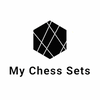Introduction to Chess and Checkers
Chess and checkers are two of the most popular and enduring board games across the globe, each boasting a rich history and a devoted following of players of all ages. While both games are played on a square board and involve strategic maneuvers, they differ significantly in gameplay, objectives, and complexity.
Historical Background
Origins of Chess
Chess originated over a thousand years ago in India and was originally called Chaturanga. Through the centuries, the game evolved and spread to Persia, the Arab world, and eventually to Europe, where it adopted some of its current rules and became formalized in the 19th century.
Origins of Checkers
Checkers, also known as draughts, dates back to the 12th century and can trace its ancestry to an early form of the game played by the ancient Egyptians. It evolved in various countries, notably in France, where it was adapted into the game much like the one we know today.
Gameplay Mechanics
Rules of Chess
Chess is played on an 8x8 grid, with each player controlling 16 pieces: one king, one queen, two rooks, two knights, two bishops, and eight pawns. Each type of piece moves in a specific way. The aim is to put the opponent's king in checkmate, a situation where the king is in a position to be captured (in check) and cannot escape from capture.
Rules of Checkers
Checkers is played on the same 8x8 board like chess, but only the dark squares are used. Each player starts with 12 pieces placed on the three rows closest to them. The pieces move diagonally, and the goal is to capture all the opponent’s pieces or block them so they cannot make a move.
Strategic Depth and Difficulty
Chess is known for its deep strategic elements. It involves several layers of tactics, long-term planning, and a variety of opening game scenarios. It requires and develops critical thinking and problem-solving skills. Checkers, while seemingly simpler with fewer types of moves, also requires strategic thinking, especially in positioning and sacrifice.
Popularity and Cultural Significance
In terms of popularity, both games have immense followings. Chess tournaments are widespread, highlighted by World Championships that attract global attention. Chess has also been enriched by its application of computer algorithms, notably with machines like Deep Blue and AlphaZero, which have taken the strategic understanding of the game to new heights.
Checkers also enjoys a robust competitive scene, particularly in international and national tournaments. It remains particularly popular in countries like the United States, Russia, and the Netherlands.
The Cognitive Benefits
Both games are celebrated not just as forms of entertainment but as tools for cognitive development. Playing chess and checkers improves memory, enhances problem-solving skills, and promotes logical thinking. Moreover, they help in the development of patience and discipline, and learning from defeat.
Inclusion in Digital and Educational Formats
The digitization of games has substantially increased the accessibility and popularity of both chess and checkers. Numerous online platforms allow players from across the world to compete against each other. Educational resources, including tutorials and practice games, help new players learn strategies at their own pace, making the games inclusive to all age groups and skill levels.
Conclusion
While both chess and checkers offer players strategic complexity and competitive thrill, each game appeals to different preferences and skill levels. Chess, with its unique combinations of piece movements and checkmate goal, offers a more complex challenge, whereas checkers provides a more accessible yet equally strategy-oriented experience. Regardless of preference, both games stand as monumental contributions to the world of board games, offering not only entertainment but also invaluable educational benefits.
Explore our large collection of luxurious chess sets!